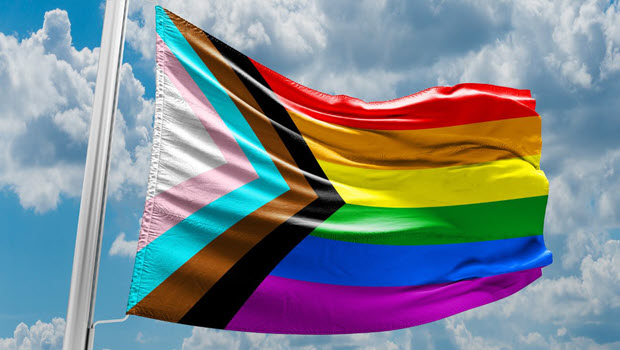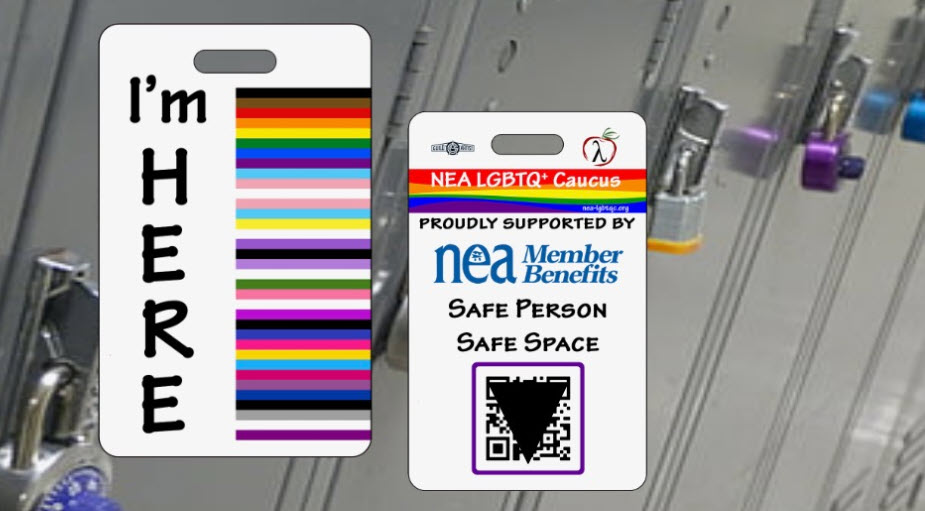When it comes to LGBTQ+ educator rights we’ve come a long way, but there’s still a long way to go. Throughout the 1950s and 60s gay and lesbian teachers were routinely fired when their sexual identity became known.
Today LGBTQ+ educators are protected by state and federal laws, but attacks have become more common in recent years, and at least 20 states have introduced “don’t say gay” bills. From pride flag bans to book bans, LGBTQ+ students and educators don’t always feel welcomed in schools.
CEA Training and Organizational Development Specialist Chris Teifke leads workshops for CEA members on Educating with Pride to ensure LGBTQ+ teachers and their allies know their rights and how to organize and fight back against attacks and discriminatory policies.
Your rights as an LGBTQ+ educator
Despite the current hostile political climate, Teifke says there has never been a time when LGBTQ+ employees were more protected.
- In Bostock v. Clayton County, a 2020 Supreme Court case, the court held that prohibitions against discrimination on the basis of sex also prohibit discrimination on the basis of gender identity or sexual orientation. Even though many state legislatures are attempting to implement anti-LGBTQ+ laws, federal law supersedes state law.
- Public school employees are protected under Title VII of the Civil Rights Act, which prohibits discrimination against employees on the bases of characteristics including sex, gender identity, and sexual orientation. An employer therefore cannot consider an employee’s sexual orientation or gender identity when deciding who to hire, fire, promote, assign responsibilities to, or any other significant aspect of employment.
- Connecticut state law also provides specific protections for LGBTQ+ people. Discrimination is prohibited in matters related to employment, housing, public accommodations, and credit and lending.

CEA Training and Organizational Development Specialist Chris Teifke presented on Educating with Pride at CEA’s Summer Conference.
What these laws mean, Teifke says, is “You have the right to be out at work. You have the right to be out and proud, when and how you choose. You also have the right to keep your gender identity and sexual orientation private. Your school cannot punish you for sharing in an appropriate way that you’re LGBTQ+—including with students and families.”
Employers also can’t treat an employee’s family differently because that employee is LGBTQ+. Employees have the right to live as their true gender and dress, use school restrooms, and otherwise live according to their gender identity. They also have the right not to be misgendered or harassed, and have their name, pronouns, and titles match their identity in every aspect of the school day.
While federal and state protections prohibiting discrimination are important, they are not absolute and do not cover every situation.
Teifke says that workplace conduct is regulated through board of education policies which are permissible as long as those policies are content and view point neutral. The board may also regulate traditional speech, dress, room decoration, and more, as well as curricular content.
Thanks to union protections, boards of education usually have a harder time regulating employee conduct—but when it comes to curricular content, they have much wider discretion. Because board policies must be view point neutral, a board of education can ban all flags from classrooms. Should a board try to ban only Pride flags, that policy would likely be deemed discriminatory. Boards may also ban “controversial/political topics” and content involving sex or gender.
Teifke says many recent attacks on LGBTQ+ content in education follow a similar playbook. Warning signs to look out for in your district include book bans, participation bans (such as banning student participation in sports), bans of discussion of LGBTQ+ content, and pride flag bans.
“Actions may start small, but it’s best to recognize the sparks before they light a fire,” says Teifke.
Supporting your LGBTQ+ students
While a board of education is permitted to take certain actions, that does not mean you can’t advocate for yourself and your students. Though, as public employees, educators’ free speech rights are limited, you can still speak up.
“You have the strongest protections when you are speaking outside of the school day as a private citizen on matters of public concern,” says Teifke. “That means that educators generally have the right to advocate for the rights of their LGBTQ+ students when they are are off duty, for example, attending a protest or a school board meeting.”
When it comes to supporting students, Teifke says that inclusive curriculum and pedagogical approaches are vital for LGBTQ+ students to thrive at school. Connecticut is one of only seven states to explicitly require LGBTQ inclusion in state curricular standards. “GLSEN and other organizations have great resources for developing a more inclusive curriculum,” Teifke says.
He also encourages educators to consider sponsoring a GSA—student organizations first known as gay-straight alliances and now often called genders and sexualities alliances. While GSAs should be student-initiated, they usually need a faculty sponsor, and sponsoring a GSA can help students know that you support them and are a safe person to talk to.
Another way to show support is by posting LGBTQ+ Pride flags or stickers, Safe Space stickers, or other markers of inclusion.
Teifke recommends, “If you have not seen others posting similar items in their classrooms, make sure to tell your principal in advance so that you can address any concerns they may have. If a school administrator prohibits you from posting inclusive materials, consult your union representative about how best to proceed. Posting overtly political materials in your classroom without clear authorization may result in disciplinary action.”
Teifke recommends GLSEN’s Safe Space Kit for educators looking for guidance on how to best talk to students about LGBTQ+ issues. He says indicating you are an ally even outside of the classroom is an important way to support students. You can purchase an “I’m Here” badge from NEA’s LGBTQ+ Caucus for two dollars.
For more information on CEA’s advocacy for LGBTQ+ students, families, and educators, visit the CEA Pride webpage.








